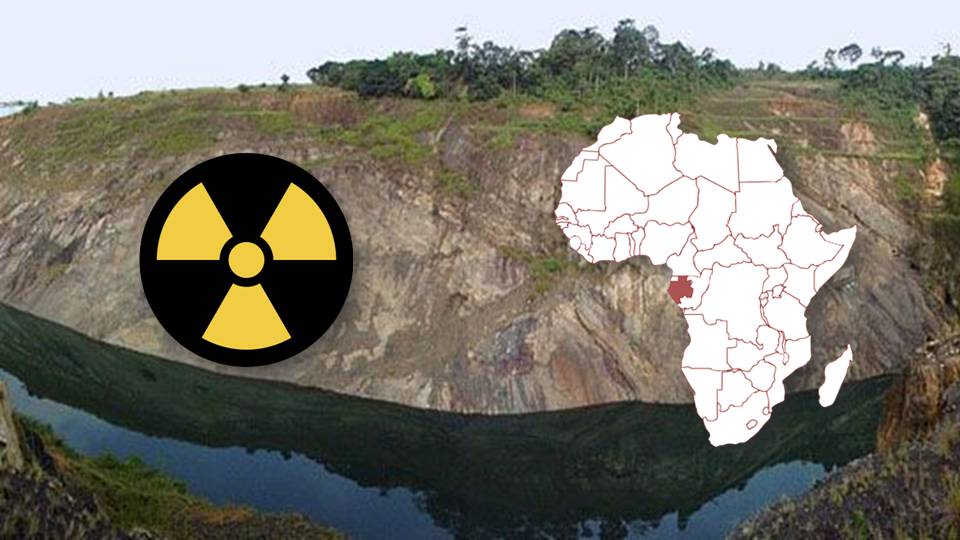The Indian government is making efforts to produce more renewable and nuclear energy to meet the growing energy demands. While there has been exponential growth on the renewable energy side, the progress in nuclear energy (cheapest and environmentally sustainable source) has been slow due to obstruction from activist groups. These activists and environmentalists believe that nuclear energy is dangerous for the environment. However, we are not sure about whether it is the truth and to what extent. Moreover, there exists a place where naturally occurring fissile materials in two billion year-old rocks have sustained a slow nuclear fission reaction like that found in a modern nuclear reactor.
Two Billion-Year-Old Natural Reactor
The Oklo-reactor in Gabon, Africa is an interesting geological formation on earth. Thousands of years before humans developed the first commercial nuclear power plants, seventeen natural nuclear fission reactors operated in Gabon.
These natural nuclear reactors produced modest energy and the average power output was about 100 kilowatts which can power about 1,000 light bulbs. Despite this, the Gabon nuclear reactors are extraordinary as they are operating since two billion years ago and have been operating in a stable manner.
At Gabon, the radioactive products of nuclear fission have been contained for two billion years and they have also proven that the long-term geologic storage of nuclear waste is feasible. However, the possibility of the operation of nuclear reactors was first hypothesized by scientists in the 1950s. It was the time when commercial nuclear reactors were becoming popular.
As far as manmade nuclear reactors are concerned, when uranium (or sometimes plutonium) atoms fission or break into parts to form nuclear energy, power is generated. The fast neutrons are formed which are slowed down by a moderating substance (typically water or graphite).
It needs to be noted that since the discovery of nuclear reactors in Gabon, scientists have been trying to find out why these reactors developed in Gabon two billion years ago. Uranium-235 is a radioactive element with a half-life of 700 million years. Traces of it are found in almost all rocks, especially magmatic rocks, and its decay is believed to be one of the sources of Earth’s inner heat. Because it decays over time at a constant rate, its concentration in the Earth’s crust is almost everywhere the same – except in Oklo.
Also Read: Environmentalists say that nuclear energy is dangerous for the environment and then there is Gabon
Is Nuclear power actually dangerous?
The nuclear reaction in a nuclear reactor can lead to the widespread contamination of air and water if not controlled. Nuclear reactors do not produce air pollution or carbon dioxide during their operation. If fossil fuels are used for mining and refining uranium ore, then the emissions from burning those fuels could be associated with the electricity that nuclear power plants generate.
Another major concern regarding nuclear power is the creation of radioactive wastes such as uranium mill tailing, spent (used) reactor fuel, and other radioactive wastes. These materials can remain radioactive and dangerous to human health for thousands of years.
Radioactive wastes are classified as low-level waste or high-level waste. The radioactivity of these wastes can range from a little higher than natural background levels, such as for uranium mill tailings, to the much higher radioactivity of used (spent) reactor fuel and parts of nuclear reactors.
Nuclear are far better
In spite of the largely clear air around it, our nuclear power potential is largely untapped. Currently, nuclear power provides only 3 per cent of our energy requirement. Part of the blame lies with excessive emphasis on renewable energy. World is so much focussed on harnessing natural sources like water, solar and wind that the cleanliness of nuclear energy has been put on the back-burner. But, the fact of the matter is that in many ways, nuclear energy is far better than those of what we term renewable. For one, renewable are unstable form of energy and rely on specific climate and weather for producing electricity. Due to this very nature, they require fossil fuels for back up energy.
Moreover, harnessing renewable also take up much more space compared to nuclear ones. According to a data from the United States government, wind farms take up 360 times more space than nuclear plants while solar plants take up 75 times more. Moreover, the damage to ecology caused has not been measured on a large scale. But, in the US alone, around 500,000 birds are killed every year in the process of providing “renewable energy” to humans.
Nuclear energy is far better and Gabon is an example for the same.
Support TFI:
Support us to strengthen the ‘Right’ ideology of cultural nationalism by purchasing the best quality garments from TFI-STORE.COM
